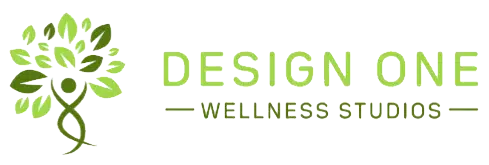It’s Okay If You Aren’t Going to the Gym Right Now
Have you ever stared at your sneakers, willing yourself to feel energized enough to go workout, but instead, felt every ounce of exhaustion weighing you down? Yeah, been there.
We’re often told that regular exercise is a cornerstone of health, yet sometimes it feels insurmountable. During periods of burnout, when exhaustion seeps deep into our bones, and overwhelming stress takes its toll, our bodies may react with stiffness, pain, and a cocktail of anxiety and depression.
Physical activity can be a powerful remedy for acute symptoms, but chronic fatigue poses a different challenge.
The guilt and fear of failure often associated with not exercising can be challenging to overcome, trapping us in a cycle of inactivity. However, it’s important to recognize that the journey to health isn’t a one-size-fits-all.
While I wholeheartedly acknowledge the benefits of exercise, I advocate for a shift in perspective towards a more compassionate and flexible understanding of physical activity. It’s about finding the right time and way to move our bodies and aligning our actions with our current well-being rather than adhering to rigid norms that may not serve us in moments of struggle.
You Have to Be Healthy to Lose Weight (and Sustain It)
The common belief that weight loss leads to health is actually reversed. It’s essential to be healthy first to lose weight sustainably.
Exercise, typically considered a beneficial stressor, encourages stronger muscles and bones. However, when our bodies are depleted, what’s intended to be a good thing can lead to further deterioration. This leaves us without the necessary resources for healing.
Sometimes, it’s easy to recognize when we need to dial back the exercise, like when we have a cold or injury. But less apparent are the hidden stressors—such as autoimmune diseases, food sensitivities, and gut pathogens—that can quietly drain our energy without us even knowing.
Other silent stressors, such as structural imbalances or mental and emotional stress, can contribute significantly to depleted energy. Interventions such as physical therapy, chiropractic adjustments, or massage therapy may be needed to reduce or eliminate structural stress on your body.
And mental and emotional factors often play a more significant role than we realize. The brain is the most energy-demanding organ in our body even until normal conditions. Add mental stress, and its energy needs increase by 12%—no wonder you don’t have much left in the tank to exercise.
Redefining Fitness
In our daily lives, “exercise” and “movement” are often used interchangeably, yet they embody distinct concepts with unique implications for our health.
While exercise is structured physical activity aiming for specific fitness goals, movement encompasses all forms of physical activity. Movement incorporates activity that integrates into our day, from walking to stretching, embodying the natural flow of life.
Physiologically, our bodies thrive on movement, not just for fitness but as a vital mechanism for detoxification. This is most notably through the lymphatic system.
Unlike the cardiovascular system, which relies on the heart to pump blood, the lymphatic system, our body’s “sewage system,” lacks a central pump. It depends on muscle contractions to push the lymph through our body. This system plays a crucial role in removing toxins and maintaining immune health. Therefore, movement actually enhances your immune system.
Furthermore, regular movement can serve as a powerful de-stressing tool. When you move your body, it releases feel-good chemicals such as dopamine and endorphins. Pair that with fresh air and sunlight, and you’ll feel the difference.
Taking Stock
Understanding where you are on your health journey is crucial before deciding on your next steps, especially regarding exercise. Reflecting on whether physical activity leaves you energized or depleted can offer valuable insights into what your body needs at this moment.
It’s essential to tune into your body’s responses before and after exercise. Feeling drained might signal the need for more rest. You may need to step back from exercise and address your sleep hygiene before working out. Read my article on the hacks that helped me get my best sleep ever if you need some help sleeping.
Symptoms like anxiety or brain fog shouldn’t be ignored either, as they may hint at deeper underlying issues that need attention.
Setting the Stage
Laying the groundwork for a movement practice starts with mental preparation.
Integrating meditation and mindfulness can foster a deeper, more intuitive movement practice that enhances your connection to your body. This allows you to tune into its signals and needs more effectively.
Breathwork is an excellent example of meditation serving to relax the body and enhance oxygen flow to the muscles, ensuring they are primed and nourished for movement.
This mind-body connection can help calm your Central Nervous System. Shifting from a state of ‘fight or flight’ into a more tranquil state can create an optimal environment for engaging in physical activities that nourish you instead of breaking you down.
Finding Your Way to Move
The concept that exercise must be a continuous, hour-long session each day is a misconception. In reality, incorporating movement into your life can be much more fluid and adaptable, allowing physical activity to be interspersed throughout your day.
Instead, let’s approach movement with a mindset of gradual integration, adding small, manageable activities that add up to significant benefits. Acknowledging the body’s daily fluctuations is crucial. Some days might not allow for as much activity as others, and that’s perfectly okay. It’s a reminder that our bodies allocate resources as needed for healing and maintenance.
This approach makes movement more achievable and ensures a constant re-engagement with physical activity.
Here are a few examples of activities you can do throughout your day:
- Walking 10 minutes -doesn’t take much time or energy, but if you can do it a few times a day, it adds up.
- Stretching – get up from your desk every hour and do 1 minute of stretching. You can do this while watching TV too.
- Raise your arms – every time you pass through a doorway, raise your arms and try to reach the top of the doorframe.
- Cooking – doing things manually instead of outsourcing to electronics like food processors and electric beaters.
During my journey with health issues, I remember being so tired I could barely get out of bed. I started doing five minutes of senior yoga from a chair – I was 30 years old then! I continued this practice while addressing my underlying health issues and eventually graduated to beginner yoga; then, I moved on to 1-hour advanced hot yoga five days a week. This underscores the power of starting small.
Some ideas for restorative movement:
- Yoga
- Pilates
- Tai chi
- Walking your dog
We have to meet ourselves where we are. How we move, and the permission we give ourselves to fit these activities into our lives in a way that feels right is just as important as the movement itself.
Check-in with Your Progress
Monitoring your progress is equally important in your routine. This is especially true for those with Type-A personalities (I see you because I was one, too). The drive for structure can sometimes inhibit the necessary adaptability in our wellness journeys.
As you become more attuned to your body’s needs and capabilities, you may find opportunities to gradually increase your movement’s duration or intensity. For instance, transitioning from chair yoga to beginner yoga can be a significant milestone, offering a sense of achievement and physical improvement.
However, balancing ambition with self-compassion is essential, recognizing when it’s appropriate to dial back to gentler forms of exercise as needed. Listening to your body and responding to its signals is a skill that develops over time, fostering a deep and nurturing connection with your physical self.
This approach supports physical growth and encourages a healthy mindset toward progress and self-care.
Moving Forward
Remember, opting out of strenuous exercise isn’t a free pass to become a couch potato. Instead, I invite you to discover forms of movement that resonate with your current physical state.
I highly recommend working with a fitness professional who grasps the nuances of movement and exercise, specializing in the connection between the body, mind, and spirit. Particularly someone who can tailor workouts, give you personalized support and guide you through each stage of your health journey with understanding and flexibility.
The distinction between movement and exercise fundamentally boils down to intention. Rather than allowing fatigue to halt your physical activity entirely, exploring alternative ways to incorporate movement into your daily routine is crucial.
This approach ensures that even on days when traditional exercise seems daunting, you can still benefit from gentle, intentional movement, keeping the momentum of your health journey and aligning with your body’s needs.
As a Functional Health Practitioner, I’m here to guide you beyond surface-level symptoms, diving deep into the underlying causes of your exhaustion. Together, we’ll explore your lifestyle, diet, and potential hidden stressors—crafting a plan tailored to lift that blanket of fatigue and reignite your energy.
Book a FREE Back-To-Balance Breakthrough Call with me today. I will give you my full attention to explore what’s been going on with you, where your biggest healing opportunities are, and what your next steps should be so you can take back control of your health.


